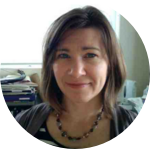About This Project
Earthworms are found all over the world, except Antarctica and very dry deserts. There are many different kinds of earthworms, about 16 described families, that live in various soils, rotting trees, agricultural lands, leaf litter, manure, and river banks.Ask the Scientists
Join The DiscussionWhat is the context of this research?
Fresh E. fetida egg capsules, and bacterial isolates from the surface, were tested for their antifungal activity on plates and shown to have an inhibitory effect of certain fungi by 1) a clearing zone around capsules and bacterial colonies (fig. 3), and 2) lack of fungal growth on the cocoons despite being placed directly on a fungal culture. Surveys conducted in my lab have demonstrated that nearly all species in the extensive Lumbricidae earthworm family possess symbiotic bacteria. If these bacterial symbionts produce antifungal substances, there is opportunity to discover novel therapeutics from this highly diverse, unexplored source.
What is the significance of this project?
Earthworms are found all over the world, except Antarctica and very dry deserts. There are many different kinds of earthworms, about 16 described families, that live in various soils, rotting trees, agricultural lands, leaf litter, manure, and river banks.
In my lab I study an earthworm species many people likely have in backyard leaf piles, kitchen scrap vermicomposting bins, or have used for fishing bait. Eisenia fetida, commonly known as red wigglers, grows well in the lab and we have been studying symbiotic bacteria that live in the earthworm nephridia. Nephridia serve as the earthworm’s kidneys, regulating water balance and eliminating waste products. Beneficial bacteria live inside the nephridia and seem to be important for the health of the earthworm, although we don’t know what they are doing yet. We do know that the parent earthworm passes the bacteria from the nephridia into the egg capsules (fig.1 and fig. 2).
What are the goals of the project?
Fresh E. fetida egg capsules, and bacterial isolates from the surface, were tested for their antifungal activity on plates and shown to have an inhibitory effect of certain fungi by 1) a clearing zone around capsules and bacterial colonies (fig. 3), and 2) lack of fungal growth on the cocoons despite being placed directly on a fungal culture. Surveys conducted in my lab have demonstrated that nearly all species in the extensive Lumbricidae earthworm family possess symbiotic bacteria. If these bacterial symbionts produce antifungal substances, there is opportunity to discover novel therapeutics from this highly diverse, unexplored source.
Meet the Team
Affiliates
B.A. Biology University of Oregon, R. D. Clark Honors College
Team Bio
Seana is a Research Assistant Professor in the Environmental Engineering program at the University of Washington. She's been studying symbioses between invertebrates and bacteria for the past 17 years. In graduate school she discovered the bacteria that produce anticancer compounds in an inconspicuous marine animal. At the University of Washington, Dr. Davidson works to understand how and why earthworms house bacteria within their kidney-like organs. These bacteria may offer new solutions to nitrogen conservation and treatments for fungal diseases. Other areas of research include bioremediation and waste treatment using vermicomposting.Seana received her BA in Biology from the University of Oregon and her PhD in Marine Biology from Scripps Institute of Oceanography.
Seana Davidson
Seana is a Research Assistant Professor in the Environmental Engineering program at the University of Washington. She's been studying symbioses between invertebrates and bacteria for the past 17 years. In graduate school she discovered the bacteria that produce anticancer compounds in an inconspicuous marine animal. At the University of Washington, Dr. Davidson works to understand how and why earthworms house bacteria within their kidney-like organs. These bacteria may offer new solutions to nitrogen conservation and treatments for fungal diseases. Other areas of research include bioremediation and waste treatment using vermicomposting.
Seana received her BA in Biology from the University of Oregon and her PhD in Marine Biology from Scripps Institute of Oceanography.
Lab Notes
Nothing posted yet.
Project Backers
- 4Backers
- 2%Funded
- $90Total Donations
- $22.50Average Donation
